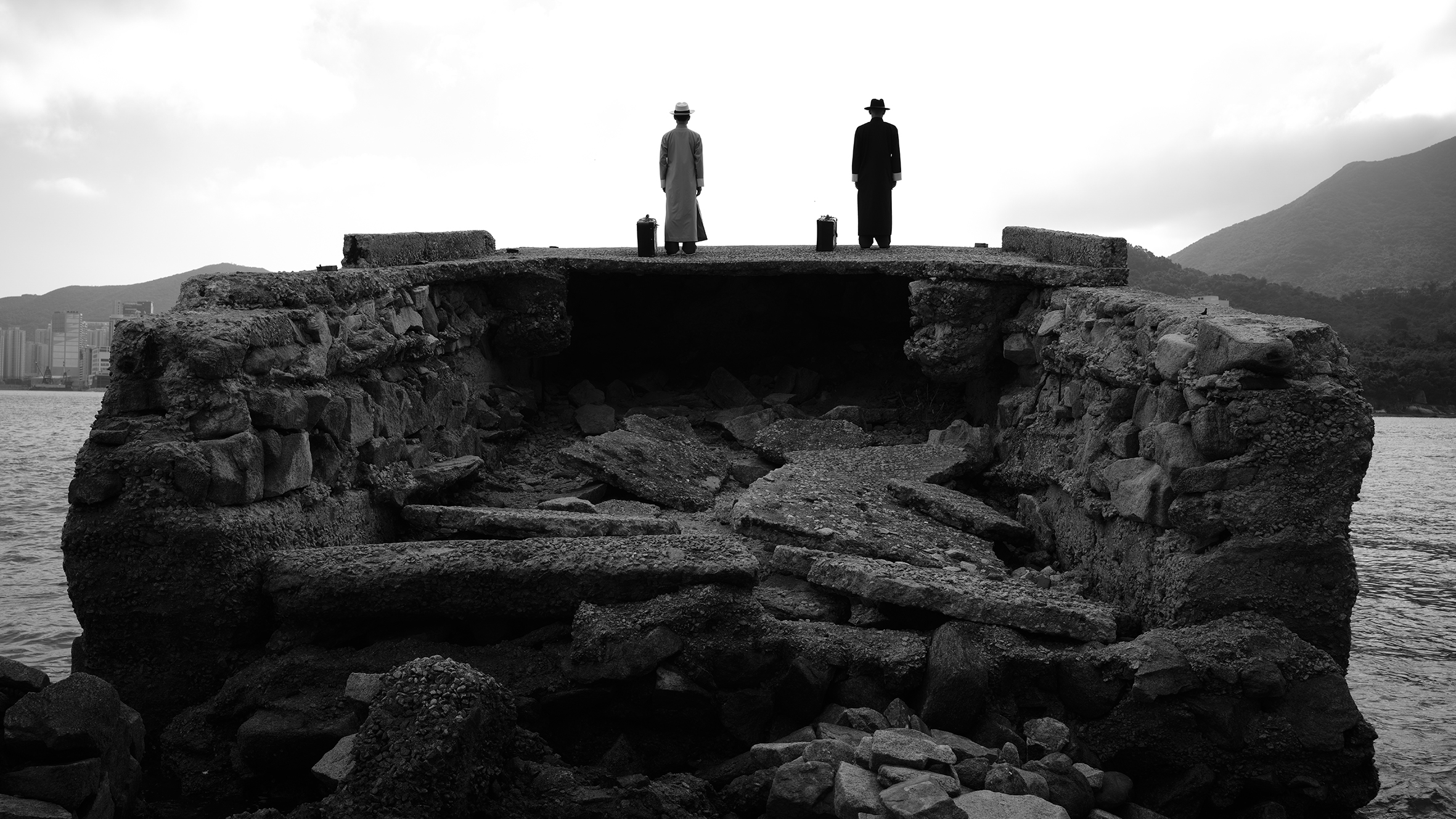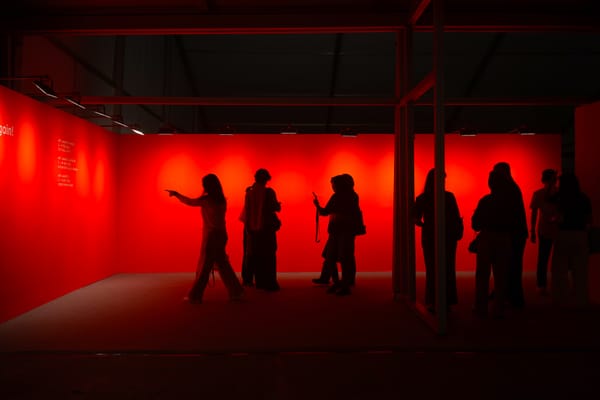Market
A Mixed Debut: Art021 in Hong Kong

Amid Hong Kong’s sweltering August heat, a new trading floor for art, Art021, rang its opening bell, disregarding the stagnant global market. Marking its newest franchise, the Shanghai-based art fair has expanded southward, launching Art021 Hong Kong from August 29 to September 1. Spanning five sections across the city, its main hub occupied three floors of Phillips’s Asia headquarters in the Hong Kong’s West Kowloon Cultural District Authority (WKCDA) Tower, across from the M+ museum. The fair’s Galleries section brought together 31 out of 90 participating galleries from 13 countries and regions with a focus on contemporary art from China and the Global South. Beyond the art bazaar, Art021 also introduced the first edition of the Guangdong-Hong Kong-Macao Greater Bay Area (GBA) Art Week, which ran from August 28 to September 8 in partnership with local and regional institutions.
The recipient of HKD 15 million (USD 1.9 million) from Hong Kong's Mega Arts and Cultural Events Fund, David Chau, co-founder of the Art021 group, stated that the fair’s expansion aimed to “giv[e] Asian artists a greater voice in the international art market.” Nearly 30,000 visitors reportedly flocked to the four-day fair, exceeding the venue’s capacity. Visitors crammed the Phillips building’s passageways so much that crowd management measures were implemented to prevent congestion at the entrance. More commotion occurred within the poorly installed and over-crammed fair itself, as there were only two lifts to the third floor.
,%201970,%20%E7%B4%99%E6%9C%AC%E6%B0%B4%E5%A2%A8%20ink%20on%20paper,%2060%20x%2084%20cm,%20frame%2075.5%20x%2099.5%20x%202.5%20cm.%20Courtesy%20Each%20Modern.jpg)
In the Galleries sector, many participants demonstrated caution about the market and opted to show risk-averse works, filling the space with figurative, landscape, and, most popularly, floral paintings—symbols of prosperity in Chinese culture and the target buyers’ preference. This was evident in the Asian Art Center’s suite of tranquil still-life floral paintings by the Taiwanese artist Dong Shaw-hwei, including Quiet Day in the Morning–Freesia (2024), Leisurely Day–Ascocenda (2023), Two Sisters–Pink Camellia, and Grace–the Camellia (both 2020). The Taipei's Bluerider Art also showcased Qi Lan’s impressionistic blossoming landscape series, Jinjiang Spring Fills the Heaven and Earth I–III (2023–24), while the Japanese artist Hiroshi Mori presented his Megamori series (2023– ) at the Tokyo-based Tsutaya Books gallery. Each of Mori’s paintings depict an anime figure surrounded by springtime sakura, trees in various shades of green, falling leaves, and frozen snow, representing the four seasons. A highlight from Taipei-based gallery Each Modern was the Japanese experimental calligrapher Inoue Yuichi’s Kanji work Hana (flower, mandarava, heavenly blossom) (1970), reminding viewers that prosperity not only lies in the form of shape but also in an artist’s underlying idea.
%20_LIU%20WA_'s%20_Messenger%20of%20the%20Sea_,%202023,%20acrylic%20on%20canvas,%20250%20x%20150%20x%203%20cm,%20at%20Madein%20Gallery's%20booth%20in%20Art021%20Hong%20Kong.%20Courtesy%20Art021%20Hong%20Kong.jpg)
On the ground floor of Phillips, MadeIn Gallery attracted significant attention with Liu Wa’s three-panel painting Messenger of the Sea (2023), featuring an assortment of orange ribbons attached to a squid-like creature that has been washed ashore. Nearby, Zhang Peili’s Transistor Radio Playing Radio Intro Sounds (2024) added to the scene with a handheld radio machine that tuned into 60 different national radio channels. This sound-looping conceptual work was a clever response to Zhang’s 26 CRT-television installation, Broadcast at the Same Time (1999.12.31 night) (2000), which is currently on display at M+.
Other galleries stood out with eclectic solo presentations. The Osaka- and Tokyo-based YOD Gallery showcased the Phase of Nothingness series (2016) by the late Mono-ha artist Nobuo Sekine, featuring acrylic-on-canvas works that warp into various shapes of wood frames and plywood. Los Angeles- and Shanghai-based Gallery All introduced a solo presentation of Iranian-born American artist Amir H. Fallah. His three portraits, Ticking Away, Locked Out, and A Light in The Dark (all 2023), each depict a person shrouded in an embellished fabric, respectively holding a pocket watch, two keys with a padlock, and a lit candle on a stand, symbolizing the artist’s struggle with identity.

Among the fair’s group exhibitions, “One Thousand And One Nights,” was supported by galleries such as David Kordansky, Lawrie Shabibi, and Vadehra Art Gallery, which purported to focus on West Asia. The group show featured works by Tala Madani (Tehran-born, Los Angeles-based), Shilpa Gupta (Mumbai-born and based), Mandy El Sayegh (Malaysia-born, London-based), and Alia Ahmad (Riyadh-born and based), among others. The artworks were impressive, but the exhibition was not without flaws: the curators (if any were involved) managed to cram all the works into an extremely small space, but this seemed to be their only contribution—that is, apart from the exhibition’s ill-defined and hackneyed theme, which perpetuated an almost orientalist attitude toward the exhibiting artists without any clear intent to contextualize their aesthetic or geographic relationship. As such, aides and interns were left in the dark, unaware of the intent behind what was displayed. One notable work, Mandy El-Sayegh’s Burning Square—Evening Blessing (2023), an oil and acrylic painting with silk-screened Chinese calligraphy, joss paper of Euros, and gold leaf, hung on the cold wall, leaving its mesmerizing canvas underappreciated. Another featured exhibition, “Porsche Young Chinese Artist of The Year,” on the second floor, was also substandard, as several artworks were reported to have received unprofessional installs.
As the recipient of public funds, Art021 attempted to present a commitment to fostering exchange beyond commerce. Its Videos section was held at the Miller Theater in Asia Society Hong Kong Center in a marathon style from August 29 to September 1. Several renowned works were presented, including Cao Fei’s stop-motion video La Town (2014), which depicts a miniature city; Kimsooja’s A Needle Woman, Paris (2009), where she stands motionless in the French capital; and Apichatpong Weerasethakul’s Faith (2006), in which a space station scene draws parallels to Stanley Kubrick’s 2001: A Space Odyssey (1968). The Expansion section at Fringe Club was equally impressive, as media artist Zheng Mahler presented an immersive exhibition titled “Three Works about Shells, Porcelain and Rare Earths,” featuring ceramics in 3D holograms. This satellite exhibition, curated by the Hong Kong-based gallery PHD Group, received positive feedback.

Despite its organizational flaws—and a far-from-ideal venue—the fair also managed to ignite buyers’ desire. The founder of Shanghart Gallery, Lorenz Helbing, reported impressive sales, including of video artist Yang Fudong’s large-scale photograph Sparrow on The Sea II (2024), from his video commission Sparrow on The Sea (2024), which debuted at the M+ Facade in March. David Lin, the director of Taipei-based Lin & Lin Gallery, noted that 70 percent of its works “were sold by Friday noon . . . [to] both [Hong Kong] locals and visitors from mainland China.” The Shanghai- and Macau-based Humarish Club & Hwas Gallery also emptied its booth of works by two Japanese artists, SUMA and Okuda Yuta, as well as by Chinese artist Zhou Chunya, including his “large-scale painting” that sold for HKD 2 million (USD 257,000), according to gallery director Hua Yuzhou. Notably, both Zhou and SUMA showcased floral artworks.
All things considered, the inauguration of Art021 Hong Kong fell short of expectations, particularly regarding its premise of showcasing art from the Global South and its mission to “deepen Hong Kong’s connection with diverse cultural and artistic ecosystems.” The fair did succeed, however, in highlighting regional galleries, such as Gallery All, MadeIn, Each Modern, and YOD, to name a few, all of which brought exciting artworks to the table. Local galleries like PHD Group were also given the opportunity to organize well-executed exhibitions. Nevertheless, there is room for improvement if the fair aims to meet global standards. With sufficient time and effort, Art021 Hong Kong has the potential to make significant strides and set new ground in the city. As for its debut, the fair was bittersweet.
Alex Yiu is associate editor at ArtAsiaPacific.







